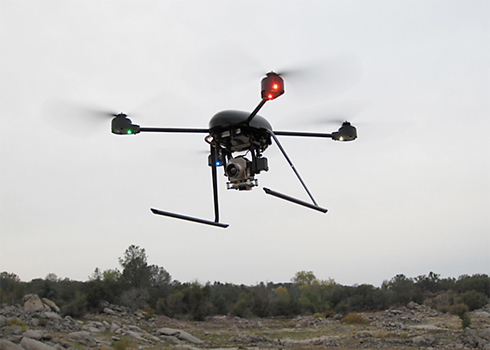The Miami-Dade police department should soon be up and flying, while the Mayor of Ogden, Utah has floated a blimp idea. Still, unmanned drone use among U.S. law enforcement remains rare. That may soon change.
The Washington Post reports that by 2013, the FAA expects to have new rules in place to allow police departments to fly lightweight, unmanned drones up to 400 feet in the air.
For now, the few departments that own drones have to apply for emergency authorization to use them, and have only used them for training or in unpopulated areas. (Though, as TPM reported earlier this month, Miami-Dade is close to obtaining authorization to use their drones in city operations.) As of December 1, 2010, the FAA counted 270 active authorizations for drone use, about half of which were held by the Defense Department, NASA and the Department of Homeland Security, which flies Predator drones along the borders. Other drone users include the FBI, manufacturers, academic institutions and the Texas Department of Public Safety. In addition to Miami-Dade, police departments and sheriff’s offices in Queen Anne’s County, Maryland and Mesa County, Colorado have flown drones.
The Post reports that among state and local agencies, the Texas DPS has been “the most active user of drones for high-risk operations.” Since first using a small Wasp drone in a 2009 standoff outside Austin, the agency has used drones in six other operations, all near the Southern border. But because of regulatory issues stemming from the use of military frequencies by civilian agencies, Texas DPS drones have been grounded since August.
In Mesa County, Colorado, meanwhile, the sheriff’s office has used a drone called a Draganfly to search for missing persons. “Not since the Taser has a technology promised so much for law enforcement,” Sheriff’s Office official Ben Miller said.
In addition to operational considerations, drones could appeal to police departments because they offer a lower-cost way to get airborne. While helicopters cost up to $1 million, a drone can cost loss than $50,000. (Meanwhile, Matthew Godfrey, the mayor of Ogden, Utah, told TPM that unmanned blimps are even more cost-effective.)
Still, issues remain. A big one is safety. From the Post:
The FAA is reluctant to simply open up airspace, even to small drones. The agency said it is addressing two critical questions: How will unmanned aircraft “handle communication, command and control”? And how will they “sense and avoid” other aircraft, a basic safety element in manned aviation?
Over the summer, a Navy drone experiencing a “software problem” wandered into restricted Washington airspace. In December, a drone belonging to the Mexican government crashed into a backyard near El Paso, Texas.
Another consideration is privacy. Drones can be equipped with night-vision, infrared and thermal-imaging cameras. The Post reports that support for a pilot program in Houston collapsed after an official suggested drones could be used to record traffic violations.
“Drones raise the prospect of much more pervasive surveillance,” Jay Stanley, a senior policy analyst with the American Civil Liberties Union’s Speech, Privacy and Technology Project, said. “We are not against them, absolutely. They can be a valuable tool in certain kinds of operations. But what we don’t want to see is their pervasive use to watch over the American people.”










